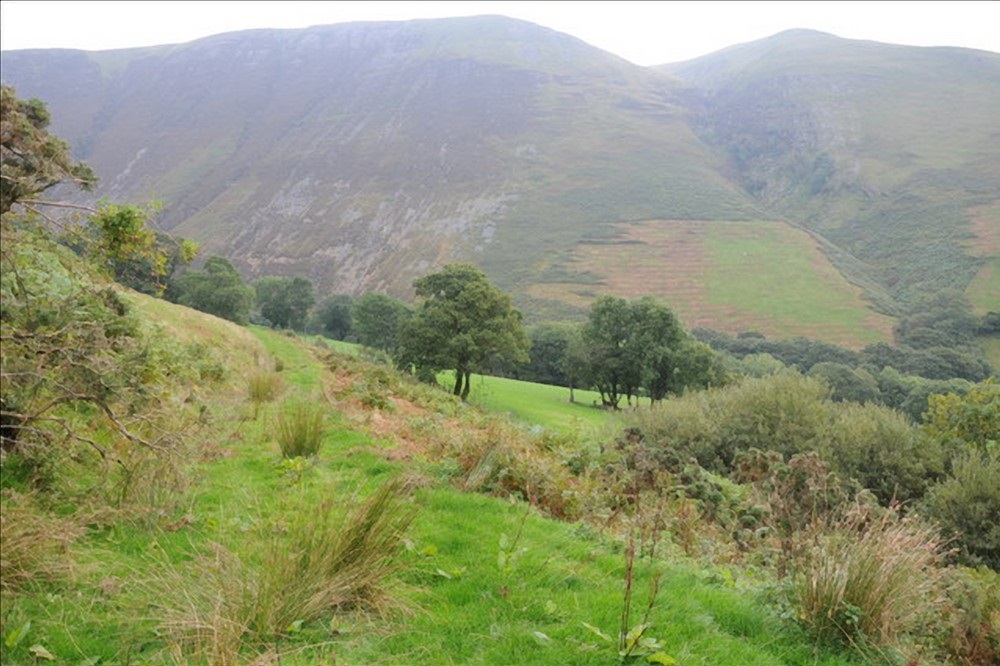Application for construction of track on scenic Snowdonia mountain approved

Dale Spridgeon, local democracy reporter
An application to construct a zig-zag track to carry heavy machinery and which is set to “impact” the appearance of a scenic Snowdonia mountain has been approved.
The route across Foel Clochydd was given the green light by Snowdonia Park watchdogs, to access a peat-land restoration project aimed at tackling climate change.
The application by Siôn Alun Roberts, of R A Roberts a’i Fab, Pennant, is being run in association with the Peatlands Regeneration Programme.
The 713m, 3.2m wide track, is set to be reduced to 1.6m after the work is completed.
A motion to approve the plan was agreed by Snowdonia Park Authority during its planning and access committee meeting on May 18, which was recorded and released on YouTube on Friday.
The project, located north of Pennant Farm, is in a remote area where there are “only a few farms” north of Llanymawddwy.
Currently grazed, the land is accessible via an unnamed road from the A470 at its junction in Dinas Mawddwy.
The proposed track will allow access to the peat-land – by machinery and specialist contractors – at Blaencywarch, Bryn Uchaf, Hengwm and Pennant.
September
Construction could start in September, over several months, whilst work to mitigate its effect could take more than 12 months.
Dafydd Thomas, Planning Officer for Compliance, told the meeting the track would “be obvious” in the landscape – but to “reduce impact” the applicants would use the “cut and fill technique” using leftover soil to renovate the land.
He reported that National Resources Wales supported the application, with additional information amendments including the work to mitigate impact.
Mr Thomas said there was an “importance of tackling impact of climate change” and on that basis the track would be used for a project to restore peatlands areas in the Park.
He said: “We feel we can encourage this application to be supported. It will be obvious, the track will have an effect on the mountain, but we feel the advantages on the basis of the benefit of biodiversity, on the basis of responding to climate change, with restoration work to mitigate any negative effect, means we should support the application, we recommend you approve it with conditions noted.”
Several officers offered support, with one saying “we need to dam these wetland areas,” while another said “not only is the peat project good for climate change and storing carbon, but also good for nature and wildlife.”
Renovating the track to a smaller track afterwards, was also considered “very important”. “I’d like to see a strong element there encouraging the vegetation to grow again,” one member said.
Dilemma
Another questioned the plan’s impact, and said: “I am sitting in a dilemma here, obviously the peat regeneration is a very important task – I wonder why do we need such big machines to be taken to the top of the mountain to do the work when, in other parts of the country, this work is carried out in other ways, in less accessible, less easy places, without taking up big machines and therefore causing an amount of scarring? Have all the ways to do this been thoroughly considered by the applicant?
“As an authority we must balance issues of protecting the landscape, bio-diversity and carbon capture.” He cited concerns over previous tracks.
“Potentially could this be a repetition of the footpath work at Capel Curig and Llyn Crafnant and the negative press that attracted?”, he asked.
“Have we thought through the consequences – not just through the narrow lens of climate change and reduction of the track?” Another replied that at Capel Curig only “one person has complained”.
Another said: “I am happy that the applicant has looked at every option – we are told they have to have large machinery, there’s no other option. The track needs the width so machines like diggers can gain access.
“We do realise the effect on the mountain – it is crucial the track will be reduced after the work is done. The applicant has looked into all the ways.”
Another asked if the track would be “advantageous to walkers and cyclists afterwards” but it was confirmed the only access was from Pennant, and had “no public rights of way.” Another asked: “The area has a lot of rainfall does the regeneration project take into effect erosions? is it resilient to rainfall?”
Mr Thomas replied: “Water from the path will be stored and won’t be a risk, it has all been included in the plans” The motion was carried.
Support our Nation today
For the price of a cup of coffee a month you can help us create an independent, not-for-profit, national news service for the people of Wales, by the people of Wales.





It is untrue to say only one person complained about the work on the Capel Curig to Crafnant path. I am personally aware of at least three complainants and I was one of them.